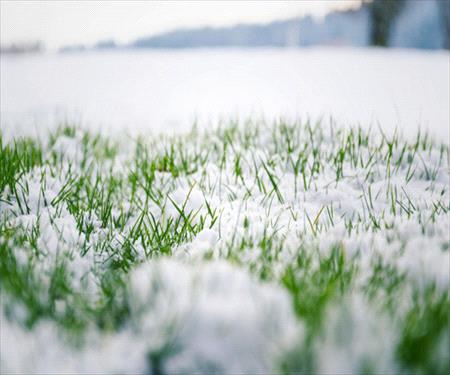Your Cart


The grass plants in a home lawn are living organisms that need to properly be cared for all year round. The harsh winter months in our climate are the hardest on the grass plant, and the Autumn is when the grass plant begins to prepare itself for winter, and next summer. Fall maintenance practices are important in building up the plant's tolerance to damaging temperature fluctuations, and disease organisms.
Autumn is the most crucial time to fertilize your lawn. It is during the cool days of fall that the grass plant slows its top growth and begins storing nutrients and sugars for the harsh months ahead. The storing process continues for as long as the plant is green. Fall fertilization is critical-this is the time when the plant is building reserves to maintain its health and thus determines the quality of next summer's lawn. Nitrogen and Potassium are essential parts of this process. Once the summer's rations are used up, the grass plant is ready for another feeding in the fall to increase root growth and fill them with food. These nutrients are also extremely beneficial in increasing the plant's resistance to damaging diseases, which will often attack when the plant is in a weakened state.
The benefits of fall aeration to the grass plant cannot be stressed enough. This service reduces soil compaction, excessive thatch, and provides a top dressing for the lawn. By breaking up compaction and removing excess thatch, the infiltration of fertilizer nutrients, sunlight and air down into the soil is greatly improved. With this improved movement of needed elements, root growth is stimulated and extensive growth of stunted root systems occurs. By greatly improving root growth, the grass plant can reach and store more nutrients and water necessary to improve its health and stress tolerance, which will directly benefit the lawn's quality next summer.
Just as mowing below the recommended height in the heat of summer will damage your lawn, so too will mowing too short in the cold weather of fall. When the cool weather of Autumn arrives, raise your mowing height to one-half inch above the recommended height for the summer months. This will help stimulate stunted roots. For the final mowing of the year, lower your mowing height to one-half inch below the standard summer mowing height. This will help the foliage prepare for winter and avoid damage from the disease. As well, the clippings from the final mowing should be left on the lawn as mulch only if a mulching mower can be used. This will protect the delicate crowns of the grass plants, and provide valuable nutrients for the lawn.
It is important to remove all large piles of debris that cannot be mulched back into the lawn with your lawnmower. Lawnmower attachments are available that chop grass and leaves into tiny bits that provide a light top dressing that will supply nutrients to the soil as they breakdown. Large quantities of debris will not breakdown quickly, and so will damage the lawn by suffocating it, and by giving a moist home to damaging disease organisms. Please contact the office of your local Weed Man for more information.